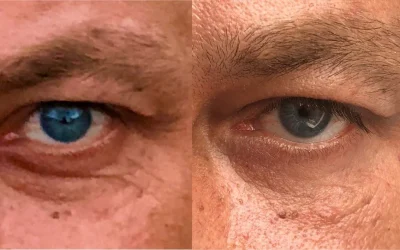You Must Know About Black Mold in Vents !

If you smell a musty odor in your home and experience respiratory symptoms when near your air vents, this could be a sign of black mold. Black mold, also known as Stachybotrys chartarum, grows in damp environments where it is able to feed on organic materials like wood.
Exposure to this fungus can cause health problems, including difficulty breathing and itchy eyes. An experienced AC technician will have the tools and high-quality killing agents necessary to clean your vents and prevent this toxic mold from recurring.
Also Read: rajkotupdates.news : corona third wave affect life insurance
Musty Smell
Black mold spores can produce a strong, musty odor that may be noticed around vents in a room. The odor may become stronger when the air conditioning system is running. If the odor is detected, it’s important to inspect the vents for black mold growth. If the odor is found, a professional should be called to clean and treat the area.
In general, any odor associated with black mold is often considered toxic and can cause a variety of health symptoms. However, if the odor is only present near one or more vents in a home, it is likely not due to toxic black mold but rather to nontoxic varieties of household mold such as Cladosporium. If the odor is noticeably stronger when the AC system is running, it is most likely caused by black mold.
The musty odor associated with black mold in air vents is typically caused by the fungus Stachybotrys chartarum. This type of mold thrives in dark and damp areas that are often neglected or overlooked. It grows quickly on cellulose materials like wood, paper, and cardboard. When it is allowed to grow, it releases spores that can cause a variety of symptoms in humans when they are inhaled.
These spores can affect the respiratory tract, triggering allergies, asthma, and hypersensitivity pneumonitis in susceptible individuals. In addition, the spores can trigger unexplained fatigue and can even interfere with cognitive functioning in some people.
When this mold is found in the air ducts of a house, it is important to have a professional test the spores to determine whether it is indeed black mold or another species of fungus. Testing kits are available, but they can be inaccurate if not used properly. It is also highly advisable to contact an AC professional, as they have all of the tools, killing agents, and expertise needed to thoroughly clean the ducts and prevent future problems.
Black mold in the vents is a clear sign that there is a serious problem that needs to be addressed immediately. The spores can be inhaled by the residents of a house and can have devastating effects on their health and well-being. Regular air duct cleaning can prevent dust and debris from clogging air vents and making them a breeding ground for dangerous fungus.
Black Spots
Black spots on your air vents are a telltale sign that there’s black mold in the ductwork. This type of mold (Stachybotrys chartarum) is particularly dangerous because it can cause a host of health problems, including respiratory issues, allergies, and headaches. Black mold is a fungal growth that thrives in moist environments, like those found in your air ducts.
Often, black dust particles are visible around the vents, especially when you turn on your air conditioning or heater. This black dust is made of mold spores and can be hard to wipe away. It also tends to have a wet and slimy appearance. If you suspect you have black mold in your vents, it’s best to call a professional.
Another telltale sign of black mold in your air vents is a sudden increase in allergy symptoms. If you notice that your eyes are watery, itchy, or you’re sneezing more frequently than usual, this is a good indication that there is black mold in your air ducts. Symptoms can also include itchy skin, fatigue, and difficulty breathing, similar to what you might experience during an asthma attack.
If you’re experiencing these symptoms, make an appointment with your doctor or a specialist as soon as possible. They can test you for mycotoxins, which are poisonous secondary metabolites that some types of mold produce. These mycotoxins can have a wide range of harmful effects on your body, from mild to severe.
It’s important to catch black mold early in order to prevent serious health problems, like lung damage. The earliest sign that you may have black mold in your vents is usually the musty smell, which can be hard to ignore. If you can’t get rid of the odor, you should look for other signs, like the ones mentioned above, to determine whether it’s safe for you to continue living in your home. If the odor gets worse, you should contact a mold remediation specialist as soon as possible. They can use a high-quality killing agent to clear the ducts, preventing mold spores from returning.
Respiratory Symptoms
Black mold in vents can cause respiratory symptoms such as nose congestion, throat irritation, and itchy eyes. This is because of the spores that black mold (Stachybotrys chartarum) releases when it grows. These spores can trigger allergies, and when inhaled can lead to various health problems depending on the person, including long-term lung damage.
Mold spores are generally air borne, which means they can travel anywhere in the house and settle on warm surfaces like vents and air ducts. If these spores find moisture in the air ducts, they can begin to grow into a full-fledged mold colony. Air ducts are usually dark and isolated, which makes them an ideal place for many varieties of mold to thrive.
When the temperature in your home gets cold, air ducts can sometimes start to accumulate moisture from the cool air that flows through them. When this happens, it’s not uncommon for mildew to start growing in the air ducts. This is because mold spores love humid environments.
Once the mildew starts to grow, it will release mycotoxins, which are secondary metabolites that can be poisonous to humans. These mycotoxins can also trigger allergic reactions and health issues in sensitive people.
In addition to respiratory problems, mycotoxins can also affect the nervous system and gastrointestinal tract. These effects can be as mild as headaches and nausea, or as severe as seizures and liver and kidney damage.
If you suspect you have black mold in your air ducts, you should call a professional right away. They can use a mold test kit to determine whether or not you have black mold in your ducts and will be able to recommend an appropriate course of action to remedy the situation.
Another way to tell if you have black mold in your air ducts is by looking at the vents themselves. Look for any black spots or accumulated dust on the vents, and pay special attention to those that you open when turning your heating and cooling system on. The more time passes between when you spot the signs of mold and you act, the more dangerous it can be to your family’s health.
Brain Fog
When mold spores enter your home through the air conditioning system, it can spread throughout the house. This is why it’s important to inspect your air conditioning systems and remove any spores found in order to prevent black mold growth in vents and other areas of your home.
If you notice black dust on your air vents, it could be a sign that there’s black mold growing inside the vent. This type of black dust often contains spores, which is why it’s important to inspect your vents and clean them regularly.
The musty smell of black mold is another telltale sign that there’s black mold in your ventilation system. This musty smell is reminiscent of wet leaves or dirt and can often be noticed when you turn on your air conditioner.
Besides a musty odor, another symptom of black mold in your vents is difficulty breathing or a scratchy throat. These symptoms can be a result of breathing in mold spores, which can be toxic to your health. This can be especially dangerous if you or a family member has asthma, as it can trigger an attack.
It’s also important to note if you have unexplained fatigue. This may be a sign of black mold in your ventilation system, which can cause headaches, nausea, or itchy throat. If you’re feeling tired all the time, it’s important to have your ventilation system inspected as soon as possible.
While it’s easy to spot black mold on walls, carpets, and other surfaces in your home, it’s much more difficult to identify if it’s in your air vents. This is because black mold typically grows on wood or drywall, but it can also grow in your air conditioning system. When this happens, it can be spread throughout the house as the spores are recycled through your system.
If you think you may have black mold in your air vents, you should consult a professional to have it tested and removed. At Green Orchard Group, we are an NYS licensed mold assessment and remediation company with over 25 years of experience. We’ll test your air vents and the surrounding insulation for black mold, and if we determine that it’s Stachybotrys, we’ll recommend an effective removal process.











